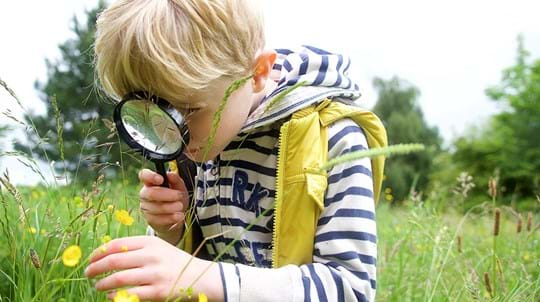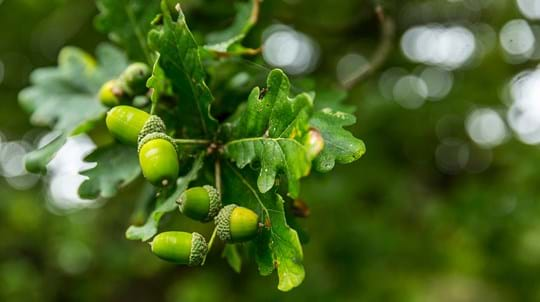
Ledmore & Migdale
Spinningdale Bonar Bridge

Woodland Trust wood
690.98 ha (1,707.41 acres)
NH661904
Explorer 441
OS Landranger 21
This beautiful spot in the Scottish Highlands offers an enriching and magical experience to visitors looking for fantastic walks, a vast array of wildlife, tranquillity, and a rich and diverse habitat to explore.
At nearly 700 hectares (1730 acres) it is one of the largest sites owned by the Woodland Trust and encompasses three Sites of Special Scientific Interest: Ledmore Oakwood (95 hectares/235 acres), Migdale Pinewood (144 hectares/356 acres), and Spinningdale Bog (29 hectares/71 acres).
Features
- Parking nearby
- Public access
- Autumn colour
- Spring flowers
- Grassland
- Marshland
- Moorland
How to get to Ledmore & Migdale
Ledmore & Migdale lies around the small village of Spinningdale, on the shore of the Dornoch Firth.
This is the gateway to Sutherland, once the ‘South land’ of the Norsemen, but for today’s travellers, it is the last leg of the journey to John O’Groats, the most northerly point of Scotland.
The site is about an hour’s drive north of Inverness on the A9 Inverness to Wick/Thurso Road. To reach the wood from the A9, turn off at Clashmore and travel 8km (5 miles) west on the A949 to Spinningdale. From the village, take a right turn onto a minor road sign-posted ‘Migdale’ and travel 0.8km (0.5 miles) up the Fairy Glen Road to reach the Torroy car park on the right.
Alternatively, if approaching from the west through Bonar Bridge, take the A949 for 8km (5 miles) to reach Spinningdale. From the village, take the left turn, sign-posted ‘Migdale’, onto the Fairy Glen Road and proceed as above.
There is no regular public transport to the woodland, but trains on the Inverness-Wick line stop at Ardgay, 9.7km (6 miles) east.
Visit National Rail for more information.
There are two buses that pass by Spinningdale daily. One travels between Lairg and Dornoch and the other a circular from Tain to Bonar Bridge and back through Clashmore.
Visit Traveline for more information.
Facilities and access
There are several entry points around the site, giving access to a network of more than 12km (7.5 miles) of paths and tracks, allowing visitors to explore the woods which stretch across three distinct and craggy hills.
The track running from the main entrance (off the Fairy Glen Road) to the east end of Loch Migdale is wide and grassy, with gentle to moderate inclines. The majority of the other tracks provide moderate to strenuous walking, with some significant slopes and uneven surfaces. Please note that the paths can become wet and very slippery in winter.
Parking is available off the Fairy Glen Road at the Torroy car park. Further parking is available in a lay-by adjacent to the northern shore of Loch Migdale (reached from Bonar Bridge) with informal roadside parking also possible at entrance points around the site.
Please take care not to obstruct gates or passing places.
The nearest toilets are at Bonar Bridge, 8km (5 miles) west of the wood where a disabled toilet is available with a RADAR key. Public toilets with disabled facilities are also available at Dornoch, 14.5km (9 miles) east.
Wildlife and habitats
Animals
The woods are rich in biodiversity with a vast array of plant, insect, bird and animal life. Mammals regularly sighted within the woods include pine marten; red, roe and sika deer; and even otter families along the shore of Spinningdale Burn. Wild cats have been sighted in the past, but you would have to be exceptionally lucky to see one.

How we're returning red squirrels to the Scottish Highlands
00:02:59
In October 2019 we partnered with conservation charity Trees for Life and together relocated red squirrels from populations in Moray and Inverness to this Ledmore & Migdale woods.
Watch the relocation filmTrees, plants and fungi
The woodland at Ledmore & Migdale is made up of a variety of sites. Ledmore Oakwood is the largest remnant of ancient oakwood in Sutherland and the most northerly extensive oakwood in eastern Britain. The woodland floor has a thick of carpet of heather and blaeberry. Migdale Pinewood is one of the most northerly pinewoods in Britain and, although it was most likely planted – much of it with larch and Scots pine in the 18th and 19th centuries - it exhibits features characteristic of naturally occurring Caledonian pine forest.
Spinningdale Bog is one of only a few valley mires in East Sutherland and features alder, birch and willow woodland.
Habitats
This wild and rugged landscape comprises rich and diverse habitats including dense broadleaved deciduous woodland, conifer plantations, heather moorland, marsh and rocky crags. Not only beautiful with commanding views, it is also of immense national importance for nature conservation.
History of Ledmore & Migdale
Ledmore & Migdale has been wooded for many centuries, but it’s the richness of its present-day biodiversity that demonstrates the value of this ancient woodland.
From the ancient pollen preserved in the acidic soils to its Neolithic cairns, its medieval industry to its early modern plantations, Ledmore & Migdale has a long and winding history.
Most notably, in 1897 the industrialist and philanthropist Andrew Carnegie bought Skibo Estate which then included the woods of Ledmore & Migdale. The estate stayed in the family until the 1980s.
Acquisition
We purchased the site in 1993, with help from Scottish Natural Heritage and the National Heritage Memorial Fund. Since its acquisition by the Trust, grazing pressure from domestic stock and deer has been reduced and significant re-establishment of Scots pine and birch has occurred.

Credit: Alan Belton / WTML
Local voices
The human history of Ledmore & Migdale only add to this magical site's richness.
Stories range from Canadian foresters who helped with the war effort, religious movements with outdoor services on the loch, and a fairy glen with a family's log cabin.
This site is truly well loved and cared for.
Things to do at Ledmore & Migdale
Walking
With lots of routes for varying abilities, venturing out on foot is a great way to explore Ledmore & Migdale.
Our top three things to try
- Loch Migdale: The loch view is a must-see for every visitor - from the shore, or from the bench higher up the hill.
- Spinningdale: One of the most northerly oakwoods in the UK, this slightly longer walk with views over the old Spinningdale mill and beyond to the Dornoch Firth.
- Natural wonders: remember your binoculars so that you can explore birds. If you are a keen botanist take the opportunity to seek out lichen, orchids, and blaeberries.

A lasting legacy
This wood is just one of many to have been protected by gifts in wills, securing it for generations to come. Your legacy gift could also make a real difference to woods, trees and wildlife.
Learn what your gift could mean









































